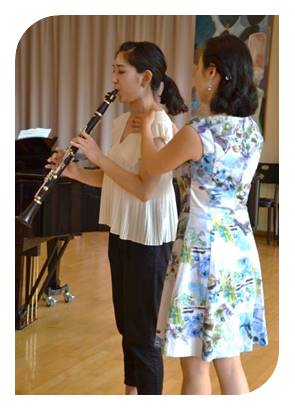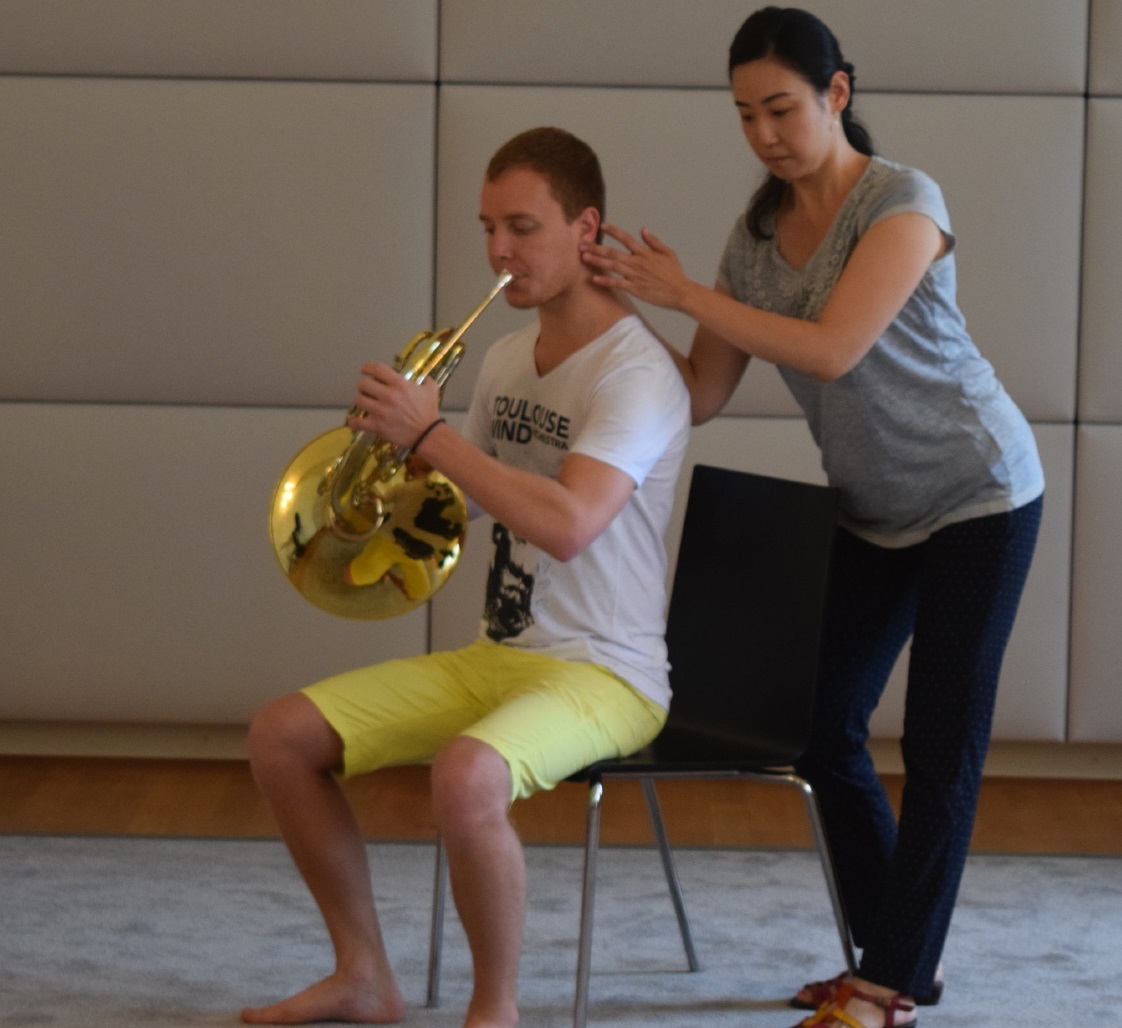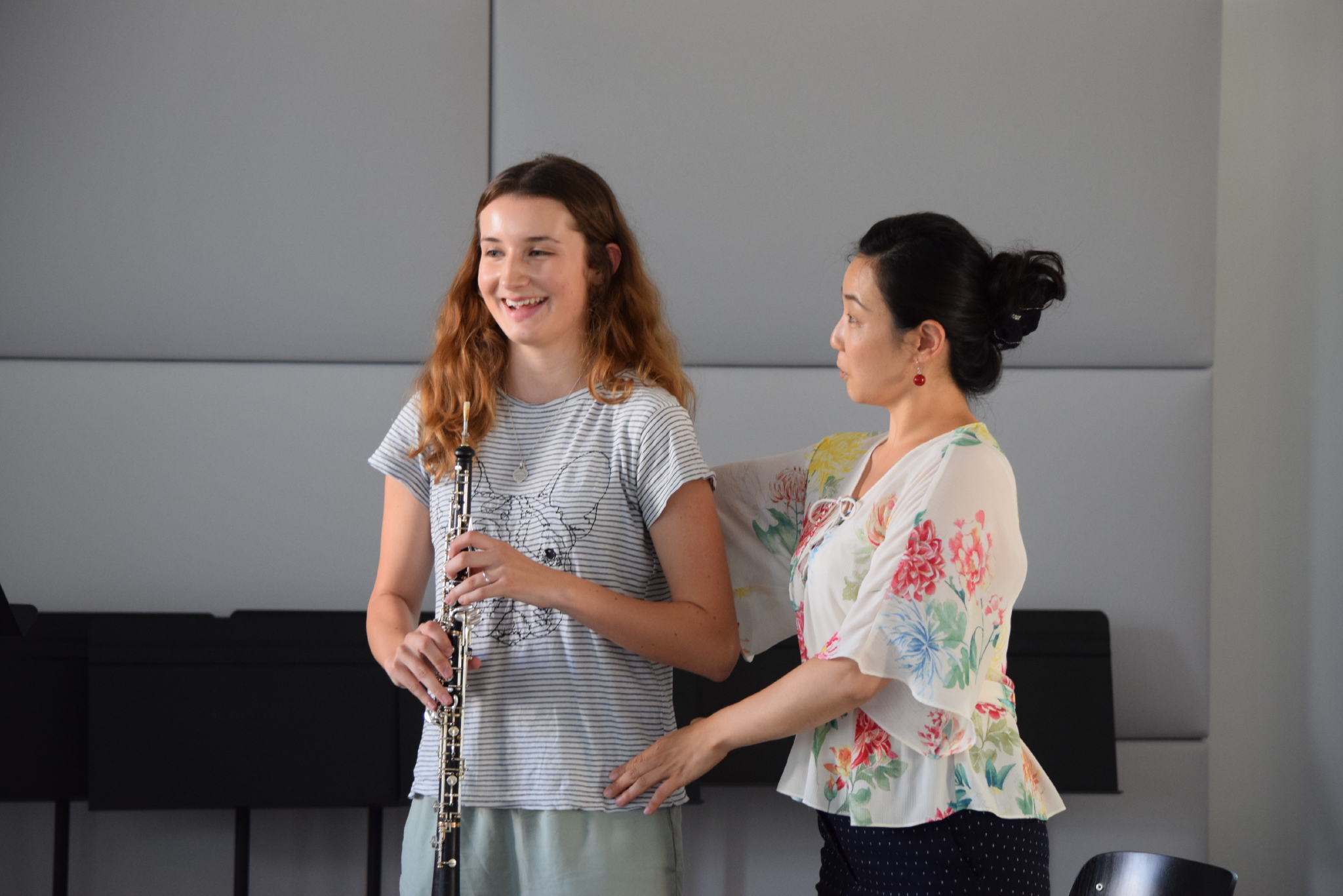F.M. Alexander Technique

(International Summer Academy Biel 2016)
The Alexander Technique (A.T.), named after its creator Frederick Matthias Alexander, is an educational process that attempts to develop the ability to avoid unnecessary muscular tension by retraining physical movement. Alexander believed that poor habits in posture and movement damaged spatial self-awareness; he believed the technique was a mental training technique as well.
Alexander developed his technique's principles in the 1890s in an attempt to address voice loss during public speaking-a probable result of unintentionally retaining childhood asthma breathing problems. He credited his method with allowing him to pursue his passion for reciting in Shakespearean theater.
Some proponents of the Alexander Technique observe that it addresses a variety of health conditions related to cumulative physical behaviors. However, as of 2013, the sparse supporting medical evidence was of moderate quality and overall, the effectiveness of the Alexander Technique on clinical conditions is uncertain because of insufficient evidence and because it relies on education and sustained use by the patient. There is evidence suggesting the Alexander Technique is, so far, helpful for long-term back pain, long-term neck pain, and may help people cope with Parkinson's disease.
Alexander's approach emphasizes awareness strategies applied to conducting oneself while in action, (which could be now called 'mindful' action, though in his four books he did not use that term.)
Actions such as sitting, squatting, lunging or walking are often selected by the teacher. Other actions may be selected by the student that is tailored to their interests or work activities: hobbies, computer use, lifting, driving or artistic performance or practice, sports, speech or horseback riding. Alexander teachers often use themselves as examples. They demonstrate, explain, and analyze a student's moment-to-moment responses as well as using mirrors, video feedback or classmate observations. Guided modelling with a highly skilled light hand contact is the primary tool for detecting and guiding the student into a more coordinated state in movement and at rest during in-person lessons. Suggestions for improvements are often student-specific, as everyone starts out with slightly different habits.
The Alexander Technique is used and taught by classically trained vocal coaches and musicians in schools and private lessons. Its advocates state that it allows for a balanced use of all aspects of the vocal tract by consciously increasing air-flow, allowing improved vocal skill and tone. The method is said by actors to reduce stage fright and to increase spontaneity.
The Alexander Technique is a frequent component in acting training, because it can assist the actor in being more natural in performance.
Source Wikipedia


(Internationale Meisterkurse Rheinau 2017)